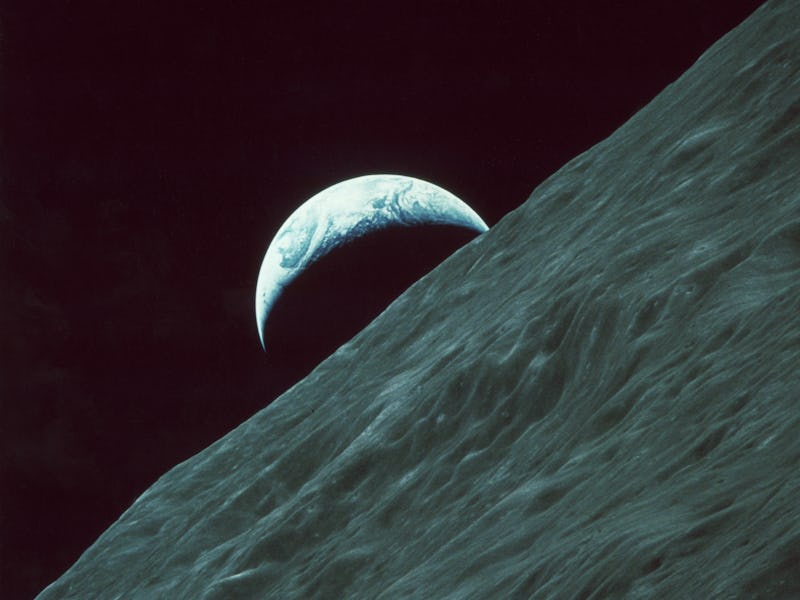To host complex life, planets have to have this one quirk
We owe life on our planet to Earth's slight tilt.

Earth is a special planet. Scientists have scoured the universe, finding thousands of foreign worlds orbiting different stars. None, so far, have shown signs of the life-bearing characteristics of our home.
New NASA-funded research suggests one of Earth’s planetary qualities is critical for any complex life to develop: the planet’s slight tilt on its axis.
This implies exoplanets with a similar tilt are also better suited to host complex life, the study team argues. Exoplanets with a tilt are, in turn, better targets for our search for intelligent life in the cosmos.
These findings were presented at the Goldschmidt Geochemistry Conference, which was held virtually in July.
What’s new — We know certain elements are needed for life to evolve and be sustained. Earth had the supplies for the recipe, namely carbon and water. Earth is also situated not too far nor too close to the Sun, allowing for liquid water to exist on its surface.
The planet’s magnetic field also protects it from the Sun’s harmful radiation.
But for complex, diverse lifeforms to develop on Earth, our planet needed oxygen.
“The angle Earth’s axis of rotation is tilted as it travels around the Sun is known as obliquity,” reports NASA.
The study team, including researchers from the University of Chicago and Purdue University, created a model allowing them to test which conditions on Earth allowed oxygen to be produced by living organisms through photosynthesis. They input different conditions to see what allowed for oxygen to exist in the quantities that it does today.
One especially important factor emerged: Earth’s tilt on its axis.
As it orbits the Sun, Earth's sphere tilts on its axis at an angle of 23.4 degrees. This tilt is why we have seasons — parts of the planet receive more direct sunlight during the summer, and less during the winter.
The model found that as the tilting of a planet increased, so did the production of oxygen in its ocean. The tilt allows biological ingredients of the planet to be recycled more efficiently, the research suggests.
Why is oxygen important for complex life?
Earth formed around 4.5 billion years ago, but the planet had no traces of oxygen for the first two and a half billion years.
This means the first signs of life on Earth developed without the use of oxygen. However, as the first tiny, microbial life began to develop, they transformed into a different type of organism called cyanobacteria — essentially algae.
Cyanobacteria were the first known lifeforms to develop photosynthesis by using energy from the Sun to produce oxygen.
This transformation allowed for life to develop into more complex and diverse forms, producing some of the organisms that still live on today such as different types of animals, plants, and fungi.
So while primordial, basic life may not need oxygen to first develop, more complex forms of life do. And for complex forms to evolve beyond Earth, this research suggests their planet must also be on a tilt.
Why this matters — This finding could help scientists narrow down their search for intelligent alien civilizations.
While astrobiologists look for signs of biosignatures on other planets that are indicative of some form of life — microbes, bacteria, and the like — other scientists are more concerned with finding alien life that developed the same way that humanity did.
If further research proves this study’s hypothesis correct, it appears we now have another clue. Look for the tilt, and find the possibilities.
Abstract: The origin of oxygenic photosynthesis did not immediately oxygenate Earth's atmosphere. By some estimates, oxygenic photosynthesis and low-level oxygenation of the shallow ocean preceded atmospheric oxygenation by several hundred million years. This temporal disconnect illustrates that biological oxygen production need not manifest as an oxygenated atmosphere on other inhabited worlds--and exoplanetary atmospheres may ultimately provide misleading windows to surface habitats. This talk will explore how various planetary parameters--such as orbital obliquity, rotation rate, surface pressure, and continentality--affect biospheric oxygenation on early Earth and beyond. We focus in particular on sea-to-air oxygen fluxes and the possibility of sustained "oxygen oases" in disequilibrium with an anoxic atmosphere using 3D models for ocean dynamics and marine biogeochemistry. We find that increasing day length, higher surface pressure, and the emergence of continents all influence ocean circulation patterns and associated nutrient transport in ways that may enhance biospheric oxygen production. We argue that these relationships may have contributed to Earth's oxygenation by favoring a secular increase in biogenic oxygen fluxes to the atmosphere. We additionally find that high orbital obliquity may be associated with greater oxygen fluxes to the atmosphere on annual average due to seasonal deepening of the mixed layer and resulting nutrient entrainment. Worlds that are tilted on their axes may thus be more likely to evolve complex life.
This article was originally published on